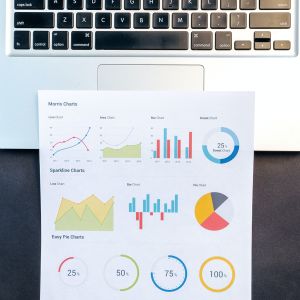
The Federal Reserve is widely expected to announce another interest-rate hike on Wednesday, but there are other significant economic events to look out for this week. In fact, these events might be even more interesting than the rate hike itself.
GDP and Employment Cost Index Reports
On Thursday, the Bureau of Economic Analysis (BEA) will release the preliminary measure of second-quarter gross domestic product (GDP). This report is crucial in understanding the health of the U.S. economy. Current predictions suggest that economic growth is slowing, with expected real GDP growth (adjusted for inflation) of 1.5% in the second quarter, compared to 2% in the first quarter.
However, some economists, like Gregory Daco, chief economist at Ernst & Young, believe that second-quarter GDP growth might exceed the consensus estimate. Daco forecasts growth of 1.7%, highlighting that although consumer spending is expected to be modest, business investment has shown robust gains.
Consumers have become cautious and selective in their spending due to high prices and stricter credit conditions. However, there is a positive note as real wage growth is turning positive amidst slowing inflation, giving a boost to spending.
On Friday, along with the release of the personal consumption expenditures price index (PCE), the Bureau of Labor Statistics will also publish its quarterly Employment Cost Index (ECI). The ECI measures the change in hourly labor costs to employers over time. While overshadowed by the PCE release, the ECI should not be overlooked. It provides a better barometer, although less frequent, for wage growth and significant inflation input.
As we await these key economic reports, it is important to keep an eye on them as they will provide valuable insights into the current and future state of the U.S. economy.
Monthly Data and the Employment Cost Index
One thing to consider when analyzing monthly data is that it can be influenced by fluctuations in various industries, leading to an inaccurate representation of the overall situation. This is where the Employment Cost Index (ECI) comes into play. Not only does it avoid the pitfalls of monthly data, but it also provides valuable insights into the current state of service inflation.
In the service sector, wages are typically the largest input cost. Therefore, the ECI offers a reliable indicator of inflationary trends. If the ECI surpasses expectations, it could be a cause for concern, signaling the presence of deep-rooted inflation and potentially necessitating further interest rate hikes.
According to economists surveyed by FactSet, the consensus estimate suggests that the hourly labor cost to employers saw a 4.8% annual growth rate in the second quarter. On a quarterly basis, the increase is estimated at 1.1%. These figures are not significantly different from those of the first quarter, where compensation costs for civilian workers grew by 4.8% annually and at a rate of 1.2% on a quarterly basis, based on data from the Bureau of Labor Statistics.
Ellen Zentner, Morgan Stanley's chief U.S. economist, has a more optimistic outlook compared to the consensus forecast. She predicts slightly softer annual growth, which would be seen as a positive development by the Federal Reserve. Zentner notes that private wages continue to rise at a rapid pace despite the slight slowdown.
Considering both GDP and ECI, along with the anticipated cooling of PCE inflation in June, will provide valuable context to understand the trajectory of the Federal Reserve and the U.S. economy in the second half of this year.
Zentner suggests that due to core PCE inflation tracking below projections, the Fed is likely to revise its inflation forecasts downward at the September meeting. This adjustment is expected to prompt the adoption of a more neutral monetary policy stance.





Post a comment